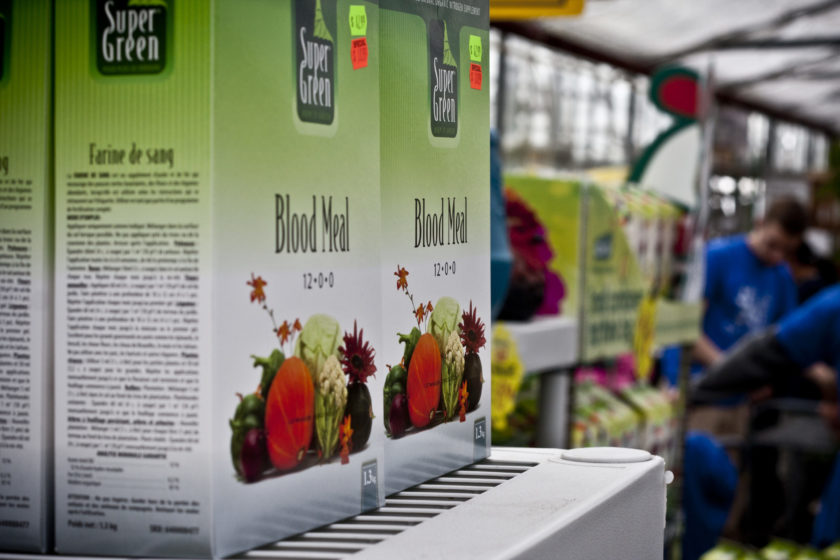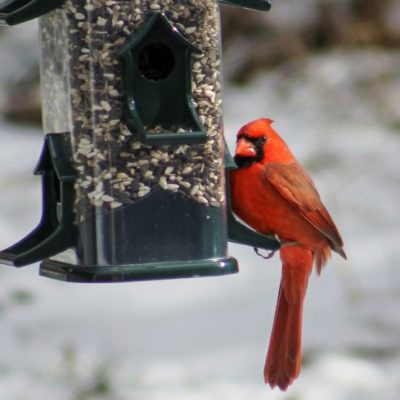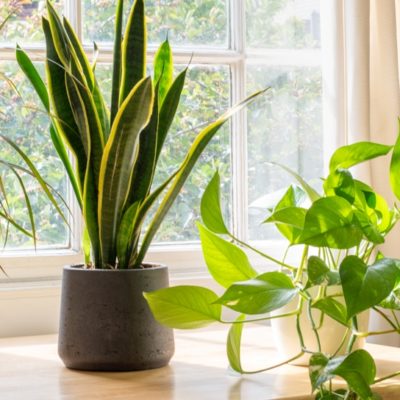
Fall vs. Spring Garden Clean Up
For most perennials, whether you cut them back in the fall versus spring is a personal choice, and one that mostly depends on when you have the time to do the job. If you’re super busy in the fall with family/friends/school/work/everything else and can’t get to the garden, it’s absolutely fine to wait until early spring to finish the clean up. Just be sure to get out into the garden in early spring before the new growth starts to appear on your perennials; clearing away all the old growth and winter damage will help your gardens grow and thrive.
Some perennials can provide winter interest in the gardens; taller grasses, as well as perennials with seed heads atop sturdy stems, can look very attractive with frost/snow on them, and can even provide a place for non-migratory birds to rest. If some of your perennials need to be divided or moved to a new garden location, it’s typically better to wait until spring and start digging once the plants start to emerge but before they grow too lush. Certain late-emerging perennials, like perennial Hibiscus (Rose Mallow) and Buddleia (Butterfly Bush), perform their best when cut back to about 2 feet in height in the fall, followed by removing the dead growth in the late spring once they start to bud. Remember that these varieties are very late to start growing, and it could be mid-June before they start waking up.
There are even some perennials that do not need to be cut back at all, and these are important to note: Heuchera (Coral Bells), Lavender, Bergenia, Pachysandra (Japanese Spurge), Vinca (Periwinkle), along with many rockery plants, are evergreen and keep their foliage all through the winter. This is great news for gardeners, as it means less to cut back in fall or spring, and just a little winter damage to clear away and maybe some pruning to keep their shape.
Note: Here at Belgian, you’ll probably see us doing all our garden clean up in fall – this is because springtime in the greenhouses means our days are filled with planting, watering, cleaning, and caring for all our greenhouse plants!
Fall Tasks:
- Mulch around any tender plants.
- Pull out annuals.
- Plant fall bulbs like Tulips and Daffodils for spring colour. Apply blood meal or hen manure to protect the bulbs from squirrels.
- Empty annual planters and baskets; protect any frost-sensitive pots from the elements.
- Prepare decorative pots for winter décor.
- Move any frost-sensitive statues and garden décor into an unheated shed or garage.
- Rake leaves from lawn. Jump in the pile at least once because fall is fun! Then add leaves to your compost piles.
- Harvest all your produce from your vegetable gardens. Enjoy all your hard work!
Late Winter / Early Spring Tasks:
- Empty your winter greens pots and prepare for early spring crops like Pansies and Violas!
Spring Tasks:
- Always move carefully around the garden in springtime, as some hibernating pollinators like bees could still be sleeping!
- Clean up evergreen perennials by removing dead branches and any winter damage, then pruning to shape if needed.
- Add slow release fertilizer, such as bone meal and/or all-purpose perennial food, to perennial garden beds.
- Prepare gardens for planting annuals and vegetables. Add compost, manure, and/or 3-in-1 mix to top up your beds.
- Make notes of empty spots in your garden that can be filled with new plants!
Either Spring or Fall Tasks:
- Cut back and clean up perennial gardens.
- Add a few inches of mulch to retain moisture and reduce weed growth.
- Remove annuals or vegetable plants to prepare for the next year’s crop!
- Top seed your lawn if needed.
- Remove weeds – stay on top of weeds before they get overgrown. This will allow your plants to receive adequate light and nutrients.
- Plan and create new gardens!





